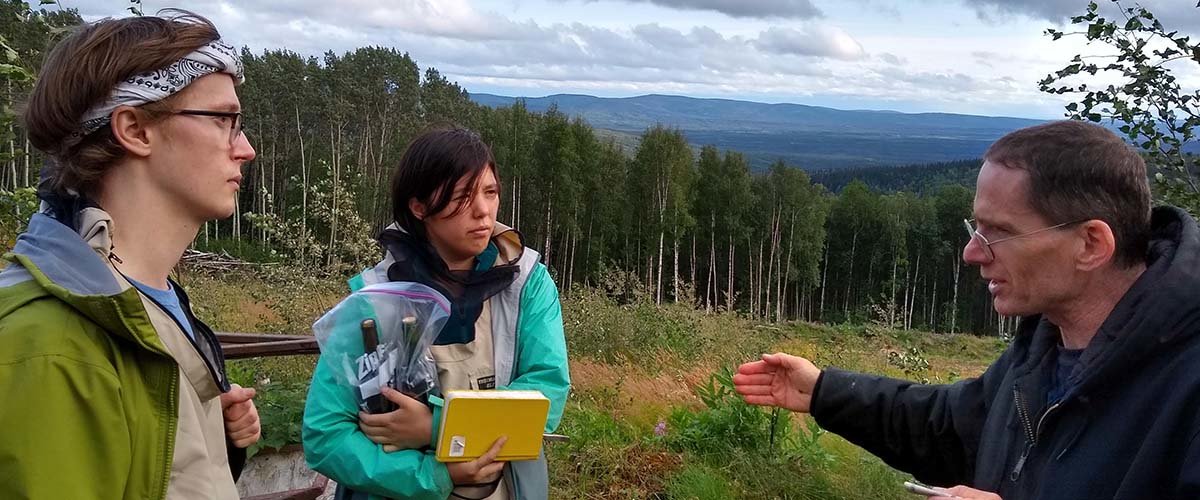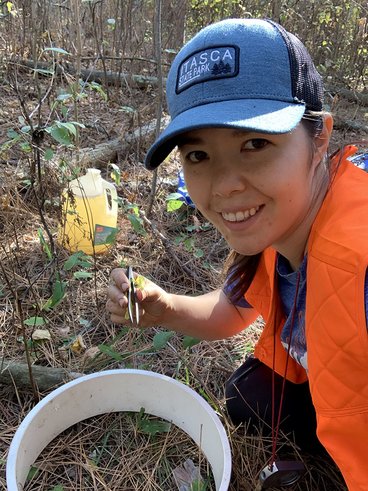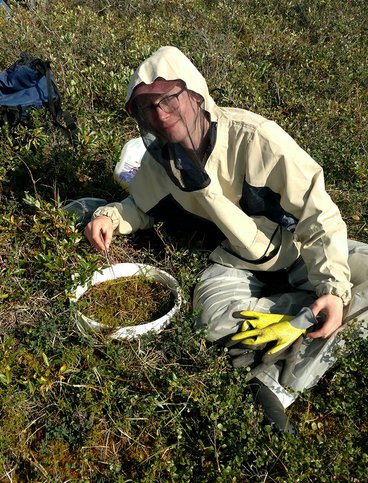
Digging in on invasive earthworms

Between spring rains, the start of gardening season, and fishing opener, it’s likely that most Minnesotans have recently encountered an earthworm. While nightcrawlers and red wigglers are seen as common in Minnesota today, every earthworm in the state is exotic and invasive.
Earthworms were introduced to Minnesota by a variety of human activities like migration, agriculture, logging, and recreational activities. Since their introduction, they’ve slowly invaded natural ecosystems across the state — dramatically altering Minnesota’s soils, and the ecosystems that rely on them, along the way.

Department of Soil, Water, and Climate Professor Kyungsoo Yoo, PhD, is characterizing different earthworm populations inhabiting crop fields, forest-agriculture edges, recreational sites, and forest interiors in Minnesota and other regions where earthworms are exotic.
“We often don't recognize that earthworms have diverse species,” Yoo explained. “Each species does different things though.”
Yoo and his research team are monitoring how various earthworm populations spread as well as the impact they have on the soil they inhabit. The different species behave differently and alter the soils and surrounding ecosystems in unique ways.
“Nightcrawlers of European origin build permanent burrows and make the soil harder in Minnesota forests. In contrast, rustic jumping worms of Asian origin live in leaf layers and mineral soils and create loose soils," Yoo said. "Nightcrawlers are largely moved as fishing bait, but jumping worms are moved by mulches. Knowing these differences is important to predict their impacts and prevent their introductions.”
Minnesota is now home to earthworms of both European and Asian origins. Yoo and graduate students on his research team are digging in to understand how these two different earthworm species are impacting the state’s soils and ecosystems.
Worms and warming

For Sara DeLaurentis, completing an undergraduate degree in plant science sparked an interest in studying soils, particularly how soils form.
“Earthworms are powerful soil-movers,” she explained. “They play a huge role in how organic debris from decomposing plants and animals is broken down and distributed in soils.”
DeLaurentis, now a graduate student in the land and atmospheric science program, is studying several European earthworm-infested sites around the Itasca Biological Station in Northern Minnesota. Her research focuses on how these worms impact soil temperature — an aspect of earthworm invasion that has been frequently overlooked.
In a non-invaded northern forest, any leaves or other organic litter that falls on top of the soil forms an organic mat several centimeters thick. When earthworms invade, they feed on this top layer of organic material and mix it with the mineral soil. This soil is more exposed to air temperature fluctuations and incoming solar radiation.
“The organic layer is completely 'tilled-in' to the mineral soil by the worms, creating a dark, bare, mineral soil,” DeLaurentis said. “What we’ve found so far is that, in plots with high levels of earthworm invasion and a bare mineral soil at the surface, weekly average soil temperatures are higher during the growing season compared to plots with an intact organic layer and low-intensity earthworm invasion.”
Those warmer soils cause soil organic carbon to decompose at a faster rate — which means that forests that have been invaded by European earthworms may contribute to climate change more than the non-invaded forests.
“What is alarming is how quickly this change can occur," DeLaurentis said. "The organic layer can be removed by European earthworms within several years, which will result in an extremely fast shift in the ecosystem.”
Getting a jump on jumping worms

Tyler Baumann worked in Yoo’s lab while completing his undergraduate degree in environmental sciences, policy and management and participated in the University of Minnesota's Undergraduate Research Opportunity Program (UROP). For his UROP project, Baumann studied earthworm and soil samples from Alaska in the lab.
Seeing how significantly earthworms can change the soil drove Baumann to jump further into earthworm research. Now a graduate student in the land and atmospheric science program, he is studying European earthworms and the more recently invasive jumping worms of Asian origin in the forests at the Minnesota Landscape Arboretum.
“I am looking at how the European and jumping worm populations are interacting and what species are present,” Baumann said. “I’m also looking at how they impact the forests by altering soil horizonation, bulk density, nutrient levels, and temperature.”
Jumping worms live in the top two inches of soil and cause sweeping changes to ecosystems once they invade. They create a loose granular soil structure of aggregates that are similar to the structure of cat-litter or coffee grounds. Along with this change in soil structure, jumping worms increase decomposition and remove the top organic layer from the soil, which could massively increase erosion.
“The soil change creates cascading effects because changing the soil impacts all parts of the ecosystem,” Baumann explained. “The life that evolved in these ecosystems did not evolve alongside the jumping worms and the soils they create. Plant and animal communities can shift, conditions can favor other invasive species, and many native species can no longer survive.”
So far, Baumann’s research shows that jumping worms exclude and reduce European earthworm populations and significantly reduce the bulk density in the upper layer of soils. He’s also looking at how jumping worms spread around Arboretum grounds and impact nutrient levels and soil temperature.
Eradicating jumping worms from invaded forests is impossible, but research at the Landscape Arboretum is exploring ways to control jumping worms using various substances in forest settings. If any are found to be effective, they’ll help limit the spread of these invaders. Slowing further transport through public outreach, policy, and continued research is crucial to reduce the impacts of invasion in the future.
Protecting Minnesota’s ecosystems
Earthworms may seem like a natural part of Minnesota’s forests and fields, but Yoo, DeLaurentis, and Baumann are finding these little creatures impact the state’s ecosystems in big ways. They trigger a loss of biodiversity, accelerate soil erosion, deplete nutrients, and cause trees to become moisture-stressed.
“Basically, earthworms completely redesigned the soils in which Minnesota's forests put their roots,” Yoo shared. “The first wave of earthworm invasion was stealthy, and few knew enough about them to warn the public at the early stage of invasion.”
With current research showing how earthworms impact ecosystems and how they spread, the hope is that Minnesota can better respond to and contain the current jumping worm invasion and any future exotic earthworm introductions in the state.





